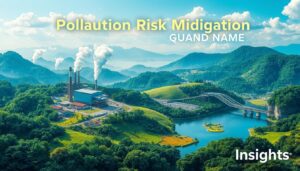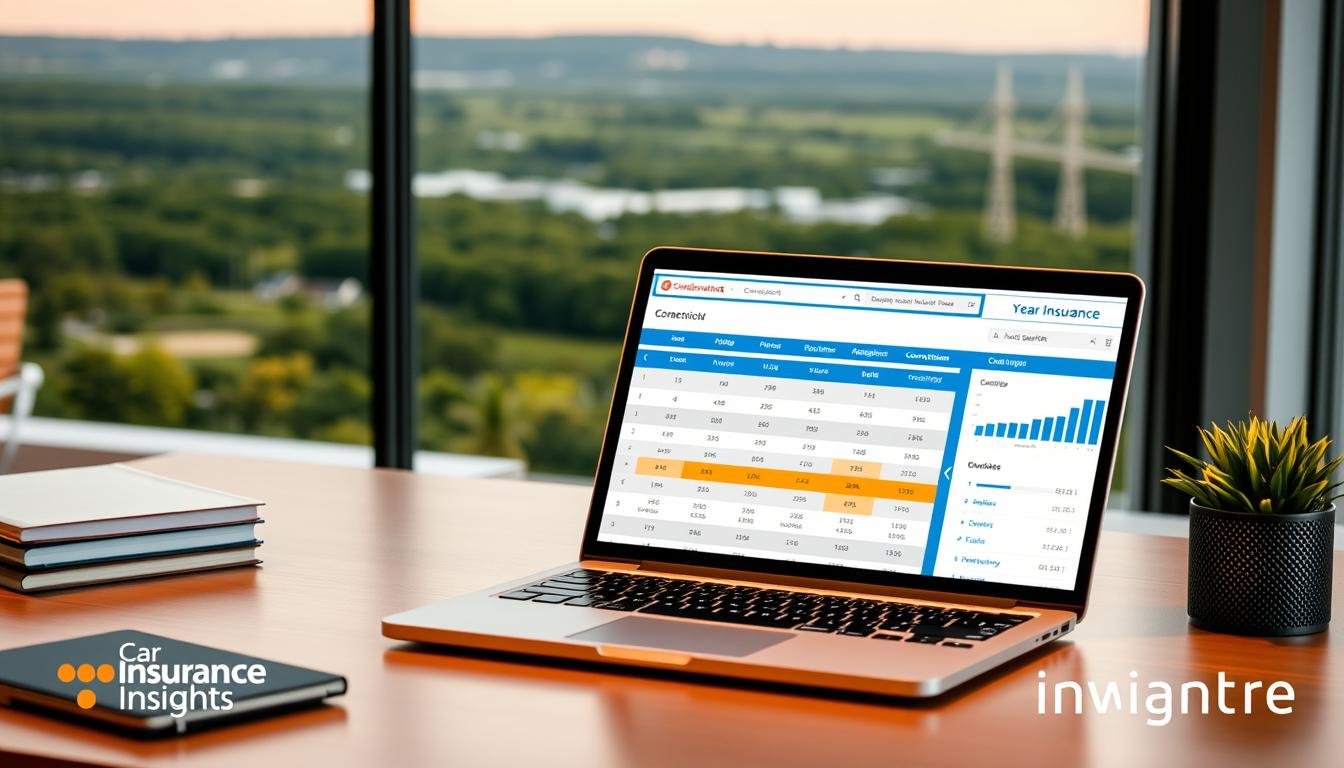As environmental concerns continue to escalate globally, businesses are facing increasing pressure to address their environmental impact. One critical way to manage these risks is through pollution liability coverage. Without the right insurance, companies may face severe financial losses and legal challenges. This article explores the essential components of pollution liability coverage, its importance, and how businesses can safeguard themselves from environmental liabilities.
Key Insights
- Pollution liability coverage shields businesses from financial losses related to environmental contamination and pollution events.
- It covers costs associated with cleanup, legal defenses, and third-party claims, providing comprehensive protection against environmental liabilities.
- Businesses must identify their specific pollution risks to determine appropriate coverage.
- Pollution liability insurance can be tailored with options such as site-specific and contractor’s pollution policies, each addressing distinct environmental risks.
- A thorough risk assessment is essential for selecting the right coverage to protect against environmental hazards.
Table of Contents
What is Pollution Liability Coverage?
Pollution liability coverage is a specialized form of insurance that protects businesses from the costs and liabilities associated with environmental contamination. Whether the pollution arises from a sudden event or a gradual release, this coverage helps manage the fallout, including third-party claims for bodily injury, property damage, and regulatory penalties.
Core Components of Pollution Liability Coverage
Pollution liability insurance, also referred to as environmental liability insurance, typically includes several key protections:
- Bodily Injury and Property Damage: Covers claims for health issues or property damage caused by environmental pollutants.
- Cleanup Costs: Provides funding for the cleanup and remediation of contaminated sites.
- Legal Defense: Pays for legal representation and potential settlements if your business faces lawsuits related to pollution.
Why Pollution Liability Coverage is Essential for Businesses
In the modern regulatory landscape, pollution incidents can lead to devastating financial losses. These can come in the form of hefty fines, mandatory cleanup efforts, and expensive legal battles.
The Critical Role of Pollution Liability Coverage
“Pollution liability insurance is an essential protection for companies operating in industries prone to environmental hazards. It ensures they have the financial means to address regulatory requirements and manage the legal implications of pollution incidents.”
Businesses equipped with pollution liability insurance are better positioned to stay afloat and mitigate the financial impact of unforeseen environmental challenges.
Identifying Pollution Risks
For a business to obtain the right pollution liability coverage, it must first identify its unique pollution risks. These risks vary widely depending on the industry, but common sources include:
- Storage Tank Leaks: Tanks that hold hazardous substances, such as fuel or chemicals, can leak, causing costly environmental damage.
- Improper Hazardous Waste Disposal: Mishandling dangerous waste can result in contamination, leading to substantial fines and cleanup costs.
- Accidental Spills or Releases: Equipment failures, human errors, or natural disasters can result in the unintended release of pollutants.
Comprehensive Risk Assessment
To effectively manage these risks, businesses should conduct a thorough risk assessment. This involves analyzing potential sources of pollution, assessing the likelihood of incidents, and estimating the potential financial impact of environmental liabilities.
| Pollution Risk | Description | Potential Impact |
|---|---|---|
| Storage Tank Leaks | Leaks from aging or poorly maintained tanks releasing pollutants. | Expensive cleanups, legal liabilities, environmental damage. |
| Improper Waste Disposal | Mishandling of hazardous waste resulting in contamination. | Fines, penalties, reputation damage, environmental harm. |
| Accidental Spills | Unintended release of pollutants due to equipment failure or error. | Cleanup costs, legal liabilities, damage to the environment. |
Understanding your specific pollution risks is the first step in selecting the right insurance policy that provides comprehensive coverage.
Types of Pollution Liability Coverage
Pollution liability coverage is not one-size-fits-all. There are two primary types of policies businesses can choose from based on their operations:
- Site-Specific Pollution Liability: Designed for businesses with physical locations, such as factories or warehouses. This coverage focuses on pollution that may occur on the business’s own property and includes both cleanup and third-party claims.
- Contractor’s Pollution Liability: Tailored for companies that work off-site, such as construction firms or service contractors. It covers pollution incidents that occur as a result of their work at client sites.
| Coverage Type | Key Protections | Typical Scenarios |
|---|---|---|
| Site-Specific Pollution Liability | Cleanup and remediation, third-party claims for injury or damage. | Spills or leaks at manufacturing sites, groundwater contamination. |
| Contractor’s Pollution Liability | Cleanup at client sites, third-party claims, legal costs. | Asbestos exposure during construction, oil spills during roadwork. |
Scope and Limitations of Pollution Liability Coverage
Pollution liability insurance offers broad protections, but it’s important to understand the scope of coverage and any limitations that may apply.
What’s Covered:
- Cleanup and Remediation: Funding to address contaminated soil, water, and air.
- Third-Party Claims: Legal and financial protections for claims related to bodily harm or property damage caused by pollution.
- Legal Defense Costs: Coverage for legal fees and potential settlements in pollution-related lawsuits.
- Business Interruption Losses: Compensation for operational downtime resulting from pollution incidents.
Exclusions to Watch Out For:
While pollution liability insurance provides significant coverage, it often excludes:
- Intentional Acts: Pollution caused by deliberate or illegal actions.
- Pre-Existing Conditions: Known pollution issues that existed before the policy was purchased.
- Long-Term Pollution: Damage caused by gradual pollution over many years, unless specifically included in the policy.
Knowing these exclusions is critical to ensure your business remains adequately protected against environmental risks.
Evaluating Coverage Limits
Choosing the appropriate coverage limits is vital for adequate protection. Businesses need to balance risk exposure with affordable premiums to ensure optimal coverage.
Assessing Potential Exposure
Start by assessing the likelihood of pollution incidents. Consider the nature of your operations, the types of pollutants handled, and the proximity of your facilities to sensitive environments. Understanding your potential exposure helps determine the appropriate coverage limits.
Understanding Policy Options
Once you’ve assessed your risks, explore the various policy options. Some policies focus on sudden events like spills, while others offer protection against gradual contamination. Be sure to review each policy’s terms, exclusions, and coverage limits to find the right fit for your business.
Regulatory Compliance and Coverage
Maintaining compliance with environmental regulations is a challenge for many businesses. Pollution liability coverage can play a critical role in helping companies meet regulatory requirements and avoid costly penalties.
Key Regulations and Their Impact:
- Clean Air Act: Fines for air pollution violations.
- Clean Water Act: Heavy penalties for water contamination incidents.
- Resource Conservation and Recovery Act (RCRA): Penalties for improper disposal of hazardous waste.
By securing pollution liability insurance, businesses are better positioned to comply with these regulations and manage the financial risks associated with non-compliance.
Managing Claims and Incident Response
In the event of an environmental incident, it’s essential to have a solid plan for managing claims and minimizing the impact.
Key Steps for Incident Response:
- Immediate Reporting: Notify regulatory authorities and insurance providers promptly.
- Detailed Documentation: Record all relevant details, including the incident’s timeline, causes, and remediation efforts.
- Collaboration with Insurers: Work closely with your insurance provider to ensure a smooth claims process.
Effective incident response can significantly reduce the financial and operational fallout of pollution events.
Choosing the Right Pollution Liability Provider
Finding the right insurance provider is crucial. Factors to consider include:
- Coverage Limits: Ensure the limits match your business size and risk profile.
- Policy Terms: Understand exclusions and limitations.
- Reputation: Choose a provider with a strong track record in environmental insurance.
- Claims Support: Look for providers offering responsive, reliable claims services.
Conclusion
Pollution liability coverage is indispensable for businesses operating in today’s environmentally conscious landscape. By understanding your risks, choosing the right policy, and working with a reputable provider, you can protect your company from significant financial and legal liabilities. Don’t wait until an environmental incident occurs—be proactive and secure the pollution liability coverage that best suits your business needs.







